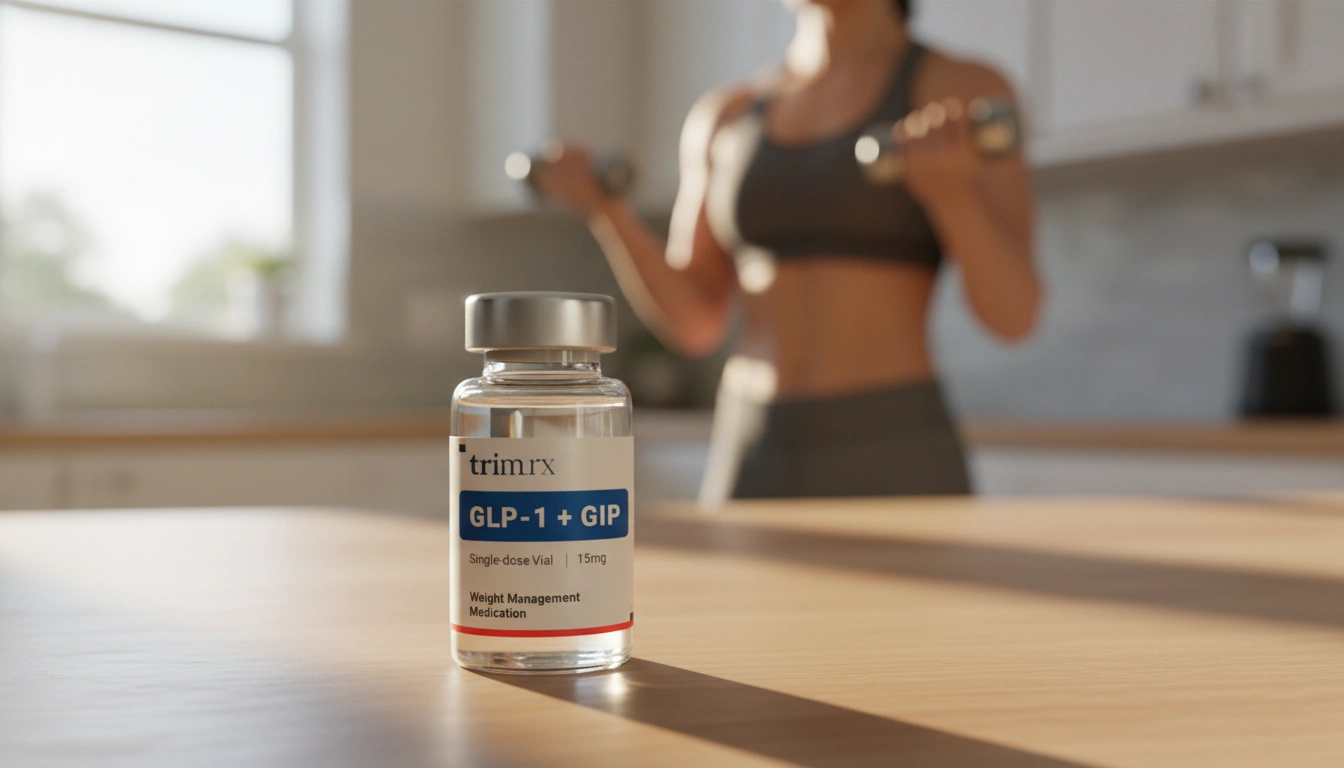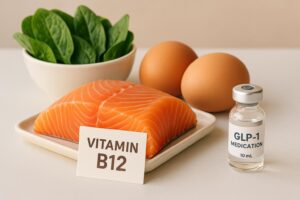What Foods Are Natural GLP-1 Stimulators: Unlocking the Power of Your Plate

The modern world is increasingly recognizing the pivotal role of hormones in managing weight, appetite, and overall health. One such hormone, glucagon-like peptide-1 (GLP-1), has emerged as a key player in the conversation around weight management and metabolic health. Did you know that certain foods can stimulate GLP-1 production in your body? As we explore the fascinating relationship between diet and GLP-1, we’ll uncover how you can harness this knowledge for better health outcomes.
In this blog post, we will delve into the functions of GLP-1, explore the types of foods that can naturally boost its levels, and discuss the implications of increasing GLP-1 for weight management and metabolic health. By the end of this article, you’ll have a clearer understanding of how to incorporate GLP-1-stimulating foods into your diet, paving the way for a healthier lifestyle.
Introduction
GLP-1 is a hormone produced in the intestines in response to food intake. It plays a crucial role in regulating blood sugar levels by stimulating insulin secretion and inhibiting glucagon release, which raises blood sugar. Additionally, GLP-1 slows gastric emptying, contributing to a feeling of fullness and satisfaction after meals. This makes it a valuable ally for those looking to manage their weight effectively.
Research indicates that dietary choices significantly impact the natural secretion of GLP-1, prompting us to consider what foods can stimulate its production. As we navigate the landscape of GLP-1 and food, we will highlight specific categories of foods that have been shown to enhance GLP-1 levels, such as proteins, fibers, and healthy fats. We’ll also discuss how these foods work in the body and how you can easily add them to your diet.
At TrimRx, our commitment to helping individuals achieve their health goals aligns with understanding and optimizing the body’s natural processes, including hormone regulation. Together, we’ll explore the transformative potential of incorporating GLP-1 stimulators into our daily routines.
Understanding GLP-1 and Its Role in the Body
What is GLP-1?
GLP-1, or glucagon-like peptide-1, is an incretin hormone secreted by the intestinal L-cells in response to nutrient intake, primarily carbohydrates and fats. Its primary functions include:
- Stimulating Insulin Secretion: GLP-1 enhances the release of insulin from the pancreas, which helps lower blood glucose levels after meals.
- Reducing Glucagon Secretion: It inhibits glucagon, a hormone that raises blood sugar levels, promoting better overall glucose control.
- Promoting Satiety: By slowing gastric emptying and enhancing feelings of fullness, GLP-1 helps regulate appetite and food intake.
The Importance of GLP-1 in Weight Management
The role of GLP-1 in appetite regulation and glucose metabolism makes it a crucial hormone in the context of weight management and obesity. Increased GLP-1 levels can lead to:
- Enhanced Satiety: Individuals may feel full sooner and experience fewer cravings, reducing overall calorie intake.
- Improved Blood Sugar Control: Stable blood sugar levels can diminish the likelihood of overeating and unhealthy snacking.
- Weight Loss: As appetite is controlled and metabolism is optimized, individuals may experience more successful weight loss outcomes.
How Food Influences GLP-1 Secretion
Diet plays a significant role in the secretion of GLP-1. Certain macronutrients have been shown to stimulate GLP-1 release effectively:
- Proteins: Consuming protein-rich foods can lead to a substantial increase in GLP-1 levels.
- Healthy Fats: Unsaturated fats can positively influence GLP-1 secretion.
- Fiber: Dietary fibers, particularly those fermented by gut bacteria, can also enhance GLP-1 production.
Understanding the relationship between these nutrients and GLP-1 secretion can empower us to make informed dietary choices that support our health.
Foods That Naturally Stimulate GLP-1
1. Protein-Rich Foods
Proteins are potent GLP-1 stimulators. Here are some examples:
- Eggs: Rich in protein and healthy fats, studies have shown that eggs can increase GLP-1 levels, leading to improved satiety and reduced hunger.
- Lean Meats: Chicken, turkey, and lean cuts of beef are excellent sources of protein that can stimulate GLP-1 release.
- Fish: Fatty fish like salmon and mackerel are not only high in protein but also provide healthy omega-3 fatty acids, which can promote GLP-1 secretion.
2. High-Fiber Foods
Fiber is essential for digestive health and plays a vital role in GLP-1 secretion. Foods high in soluble fiber include:
- Oats: Oats contain a type of soluble fiber known as beta-glucan, which has been linked to increased GLP-1 levels.
- Legumes: Beans, lentils, and chickpeas are rich in fiber and protein, making them excellent choices for stimulating GLP-1.
- Fruits and Vegetables: Apples, pears, carrots, and Brussels sprouts are high in fiber and can promote GLP-1 release when consumed regularly.
3. Healthy Fats
Including healthy fats in your diet can also enhance GLP-1 secretion. Consider the following:
- Avocados: Packed with monounsaturated fats and fiber, avocados can help stimulate GLP-1 and improve satiety.
- Olive Oil: This heart-healthy fat is effective in promoting GLP-1 release and can be used in salad dressings or cooking.
- Nuts and Seeds: Almonds, walnuts, and chia seeds provide healthy fats and protein, which can trigger GLP-1 secretion.
4. Fermentable Fibers and Prebiotics
Fermentable fibers serve as food for the beneficial bacteria in our gut, leading to the production of short-chain fatty acids (SCFAs) that stimulate GLP-1 release. Foods to consider include:
- Whole Grains: Barley, quinoa, and brown rice contain fermentable fibers that can support GLP-1 secretion.
- Fermented Foods: Foods like yogurt and kimchi provide probiotics that can enhance gut health and GLP-1 production.
5. Phytochemicals
Certain phytochemicals in plant-based foods have shown potential in stimulating GLP-1:
- Flavonoids: Found in fruits, vegetables, and teas, these compounds can enhance GLP-1 secretion. Examples include quercetin in apples and catechins in green tea.
- Curcumin: This compound in turmeric may also promote GLP-1 production and has anti-inflammatory properties.
The Science Behind GLP-1 and Food
Mechanisms of GLP-1 Stimulation
Understanding how specific foods influence GLP-1 release involves examining the physiological processes at play in the gut. When we consume high-protein or high-fiber meals, the following occurs:
- Nutrient Sensing: Nutrients such as amino acids and short-chain fatty acids interact with specialized cells in the intestines, triggering GLP-1 release.
- Hormonal Response: The release of GLP-1 into the bloodstream signals the pancreas to release insulin, while also inhibiting glucagon production.
- Gut Microbiome Interaction: Fermentable fibers are broken down by gut bacteria, leading to the production of SCFAs, which further stimulate GLP-1 secretion.
The Impact of a High-Fiber Diet
Research consistently shows that diets high in fiber can lead to improved GLP-1 levels, better appetite control, and weight management. A study indicated that participants who increased their fiber intake experienced significant changes in their GLP-1 levels and reported enhanced feelings of fullness.
At TrimRx, we believe that promoting a diet rich in fiber and protein while incorporating healthy fats can support our individualized weight loss solutions. Our approach to weight management focuses on the science behind dietary choices and their effects on hormones like GLP-1.
Incorporating GLP-1 Stimulating Foods into Your Diet
As we strive to embrace healthier lifestyles, incorporating foods that naturally stimulate GLP-1 is essential. Here are some practical tips to get started:
- Start Your Day with Protein: Opt for a protein-rich breakfast, such as scrambled eggs or Greek yogurt, to kickstart GLP-1 production.
- Choose Whole Grains: Replace refined grains with whole grains like oats, barley, and quinoa, which are beneficial for GLP-1 release.
- Snack on Nuts: Keep healthy snacks on hand, such as almonds or walnuts, which can provide protein, healthy fats, and fiber.
- Include Fermented Foods: Add yogurt or kefir to your diet to support gut health and enhance GLP-1 secretion.
- Experiment with Recipes: Explore new recipes that incorporate a variety of GLP-1-stimulating foods, such as salads with avocados, legumes, and olive oil.
By making these dietary changes, we can create a supportive environment for GLP-1 production, ultimately enhancing our overall health and well-being.
Conclusion
Understanding what foods are natural GLP-1 stimulators empowers us to make informed dietary choices that can support our weight management goals and overall health. By incorporating protein-rich foods, high-fiber options, healthy fats, and beneficial phytochemicals into our diets, we can enhance GLP-1 secretion, promote satiety, and regulate blood sugar levels.
At TrimRx, we are committed to helping individuals embrace healthier lifestyles through personalized weight loss solutions. By focusing on the science behind dietary choices, we aim to provide the tools and support necessary for sustainable weight loss and improved well-being.
FAQ
What is GLP-1?
GLP-1, or glucagon-like peptide-1, is a hormone produced in the intestines that regulates blood sugar levels, promotes insulin secretion, and enhances feelings of fullness.
Which foods are the best natural GLP-1 stimulators?
Foods rich in protein (like eggs and lean meats), high-fiber foods (such as oats and legumes), healthy fats (like avocados and olive oil), and certain phytochemicals (found in fruits and vegetables) can naturally stimulate GLP-1 production.
How does increasing GLP-1 levels help with weight management?
Increased GLP-1 levels can lead to improved satiety, better appetite control, and enhanced blood sugar regulation, all of which contribute to successful weight management.
Can I increase GLP-1 levels through supplements?
While certain supplements may claim to boost GLP-1 levels, incorporating natural food sources into your diet is a more effective and sustainable approach.
What role does fiber play in GLP-1 stimulation?
Dietary fiber, particularly fermentable fiber, promotes GLP-1 secretion by interacting with gut bacteria and producing short-chain fatty acids that stimulate GLP-1 release.
By embracing a diet centered around GLP-1-stimulating foods, we can take significant steps toward improving our overall health and well-being. Together, let’s commit to making these empowering dietary choices and support each other on this journey to better health.

Transforming Lives, One Step at a Time
Keep reading
Vitamin B12 and GLP-1 Medications: What to Know
GLP-1 medications can lower B12 absorption and intake; learn symptoms, food sources, supplement options, and how to monitor levels.
Semaglutide Injection Site Reactions: What To Know
Learn why semaglutide injections can cause redness, swelling or nodules, how to prevent and treat them, and when to seek medical care.
TrimRx vs Friday’s
Compare TrimRx and Friday’s telehealth GLP-1 weight-loss programs: pricing, medical support, coaching, delivery, and which fits your needs.



